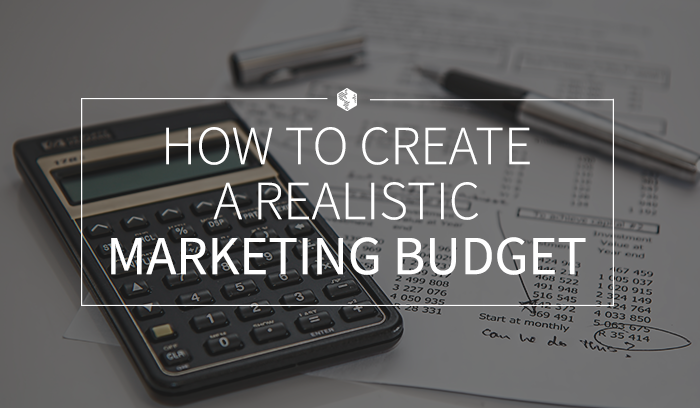As the way we promote our products and services changes, so does how we spend our marketing budgets. Since you no longer need to worry about buying ad placements in newspapers, securing commercial times, or sending out printed materials, you can make your marketing budget go further. However, many marketers take this to mean they don’t need to spend any money at all to attract new leads.
Unfortunately, some cash is still required to create a successful marketing strategy. To see real results with your digital marketing, you need to account for the many different ways you can attract leads online, as well as what needs to be done to take those leads from interested prospects to paying customers. This includes everything from outsourcing content creation to placing ads on social media.
Planning for all these factors can be difficult, making it a challenge to create an appropriate marketing budget. Let’s take a deeper look into why your budget is important, what you need to consider when building it, and how to properly allocate your funds to attract new leads and make a profit!
Key Takeaways:
- Digital marketing is cheaper than traditional methods, but still requires cash to be effective.
- Creating a marketing budget helps you and your team track the returns on your campaign investments.
- In order to create a marketing budget, you need to first establish your financial and strategic goals.
Why Your Marketing Budget Is So Important
Your marketing budget matters, because it tells your team how much money they can spend to create new content, develop campaigns, and promote your goods and services online. While the necessity for a marketing budget isn’t new, the way you’ll be spending the money has changed over time. Thanks to the internet, small businesses don’t need to save up cash for magazine ad placements or TV commercials anymore.
The upside is that today, marketing is cheaper than ever. Social media profiles, websites, and email lists are all viable ways to market your business at a low cost. However, very few companies develop strong brands without spending any money on marketing. If you want to attract high-quality leads, you need to invest in your promotions.
Of course, proper budgeting is beneficial for more than just attracting the right customers. Creating and sticking to a marketing budget can help you see where you’re spending money, the returns those investments are bringing in, and whether or not you’re likely to make a profit. Properly tracking the money you’re spending and how it’s bringing cash back into the business is crucial for staying afloat.
How to Create a Realistic Marketing Budget (In 3 Steps)
Creating a realistic marketing budget doesn’t need to be difficult. Let’s take a look at three steps that can get you started.
Step 1: Establish Your Financial and Strategic Goals
The process of creating your marketing budget must begin with identifying your goals. If you haven’t figured out what you’d like to accomplish with your marketing, you won’t know what’s necessary for achieving those goals. Before you begin budgeting, consider the financial targets you want to reach. This may include the number of sales you’d like to have, or the amount of money you’re looking to bring in. You’ll also want to identify your strategic goals, such as the number of new customers you want to attract to your website.
For best results, you should make your goals specific, measurable, and timely, like this example of a goal template from Trap.it:
Creating SMART goals, or goals that are specific, measurable, attainable, relevant, and time-bound, can help you better measure whether or not they are being met.
Finally, you can create even better goals by breaking them down into short-term and long-term targets. While you may want to become a million-dollar business, you won’t get there overnight. First, consider the steps you need to take in order to get there. Maintaining manageable goals can prevent you from feeling financially overwhelmed when you create your budget.
Step 2: Know Your Potential Costs
Once you’ve established your goals, you need to take a look at the various ways you can promote your content to achieve both your financial and strategic targets. While some promotion strategies may help you achieve your goals faster, you’ll also want to consider how they fit within your budget. Although getting a high-level influencer to tweet about your products may help you make more sales, if you don’t have the money to allocate to that particular marketing strategy, it isn’t an option.
Many marketing tools, such as Google Ads and Facebook, allow you to adjust your strategy to better fit your budgeting needs. In this example from Google Ads, you can input different budgets to see the potential results from spending a set amount each day:
At just $25 a day, companies can gain over 500 new impressions—an affordable option for those looking to improve their brand awareness.
Tools like this can help you stay realistic about the money you’ll have to spend in order to get the results you’re after. If you’re hoping to generate thousands of new leads each week, you need to be realistic about how much that will cost you. By balancing your goals and available resources, you can find the most cost-efficient way to market your business.
Step 3: Determine Your Budgeting Method
The last step in creating your budget is to determine how you will allocate the money you need for promotions and campaigns. While you now know what you’d like to achieve and where you want to spend your resources, you still need to find the right process to ensure your marketing budget is consistently replenished. Depending on the stage your business is at, there are a few ways to do this.
The easiest way for an established business to create a new marketing budget is to take a look at its previous years’ plans and actual spending. If you were on the mark the year before and successfully reached your goals, consider keeping the same budget or making small adjustments.
For newer companies, setting aside a certain percentage of each sale to go into marketing can ensure you’re not over-budgeting or spending too much. Your ideal spending rate will depend on many factors unique to your business, but it might help to know that according to Christine Moorman at The Wall Street Journal, “Marketing budgets now comprise 11% of total company budgets on average”. As you make more sales and have more funds, you can increase your initial percentage to create more expansive campaigns.
Conclusion
When it comes to marketing, you need to spend money to make money—no matter how you choose to promote your products or services. Creating the right budget enables your marketing team to develop successful campaigns that attract high-quality members of your target audience. Not only can you increase your sales this way, you can also improve your customer relationships to keep buyers coming back for more.
Let’s recap the three steps to creating your B2B marketing budget:
- Establish the financial and strategic goals you’d like to achieve through marketing.
- Understand what marketing avenues you’ll need to use to achieve those goals, and the costs associated with them.
- Adjust your existing budget to accommodate your new campaigns, or set a percentage of your sales aside to spend on marketing.
In what ways do you think a marketing budget is important to your business? Let us know in the comments section below!
Image Source: Pexels.


































